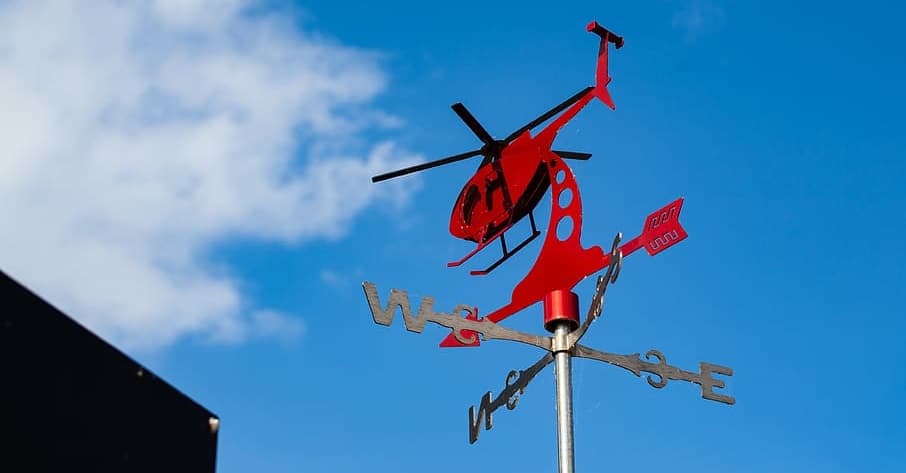
Wind plays a very important role in all aircraft and if used correctly by the pilot it can really help boost the performance of the aircraft, but if used incorrectly the results can and have been fatal.
Wind can add aerodynamic benefits to a helicopter and improve its performance or it can reduce the performance and lead to some dangerous flight characteristics. Many helicopters have a maximum wind speed for starting the helicopter to prevent the main rotor from contacting the fuselage at low RPM.
There are so many types of wind that can be used effectively in a helicopter and there are many aerodynamic ways that wind affects a helicopter. Read on to find out all you need to know about wind and helicopters!
Wind: Helicopter Friend or Foe
Many people know that helicopters produce their own wind so that’s all they need right? Nope! The natural wind of the environment needs very serious consideration by all pilots, especially when taking off, landing, or coming into a high hover to drop off a sling load suspended on a line below the helicopter.
Chinook
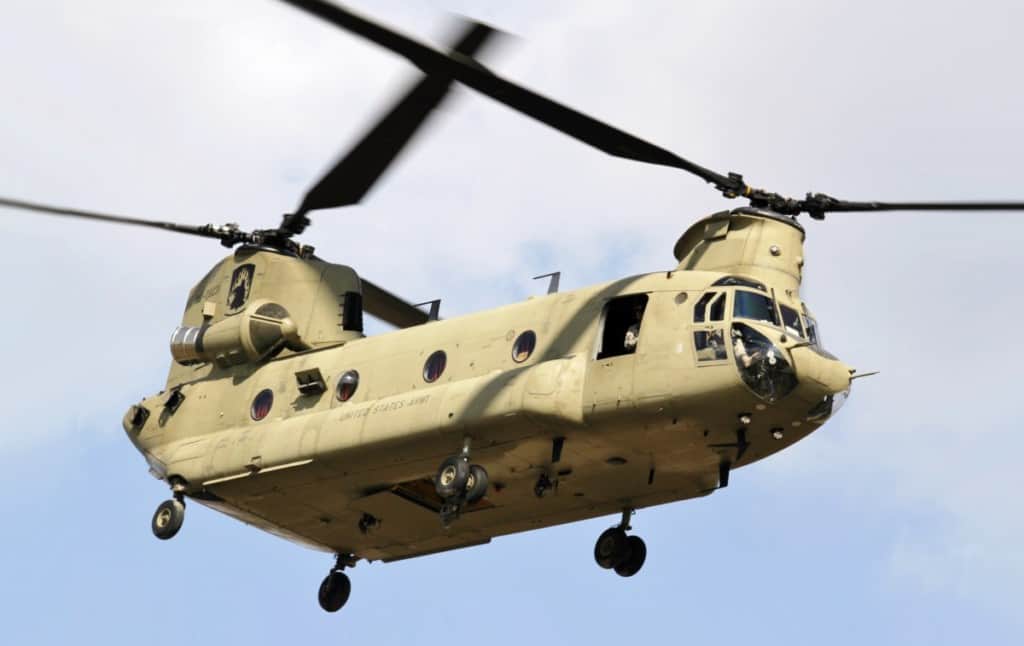
Kmax
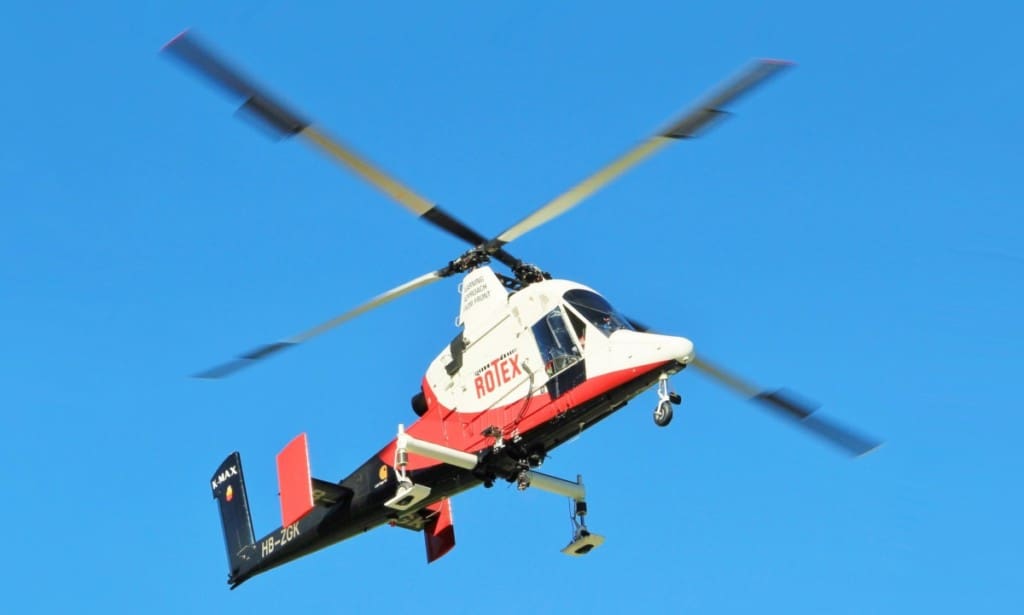
Kamov
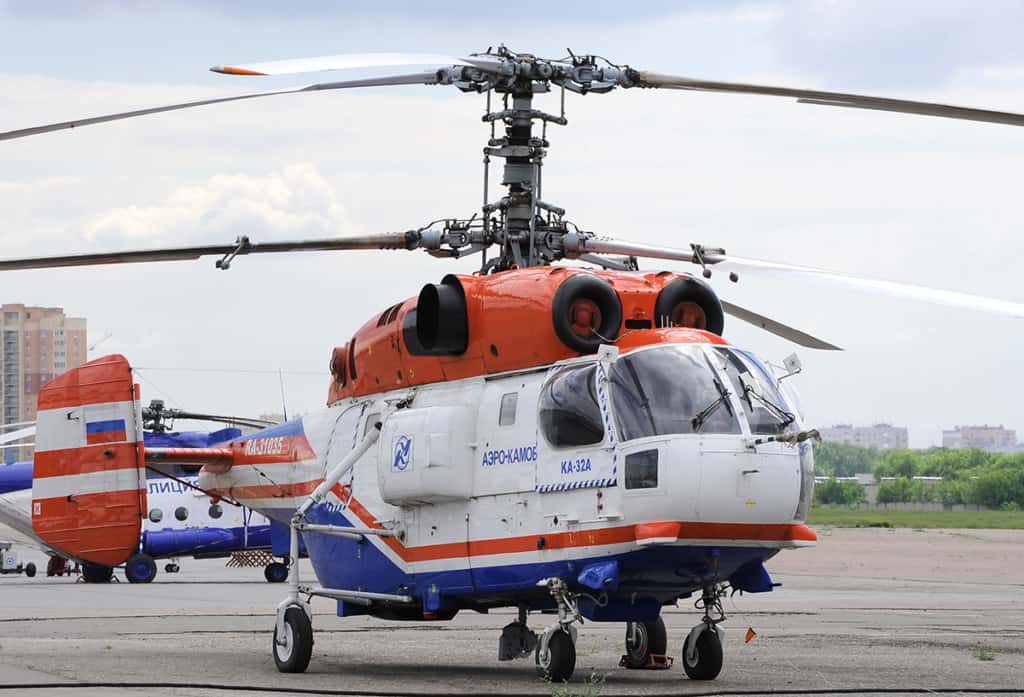
Most typical helicopters with a tail rotor gain the best use of the wind when it is coming straight ahead. Helicopters without a tail rotor like the Chinook, KMax, Kamov have a lot less need for the wind direction but the wind speed blowing across them can really improve their performance.
Let’s look at how wind affects a typical helicopter:
What are the Effects of Wind on a Helicopter?
The way wind affects a helicopter can be split into two ways:
- How wind aerodynamically works on a helicopter
- Types of wind & how they affect a helicopter
Wind on Helicopter Performance
To gain an understanding of how wind affects the helicopter we have to look at the movement of air at an aerodynamic level.
Aerodynamics on a Helicopter Main Rotor
I hope I can keep this simple and clear enough for you to follow! There are so many aerodynamic things that are going on so ill keep it as simple as possible.
The blade cross-section below is what the diagrams are referring to. Imagine looking at the end of the blade when following the illustrations below.
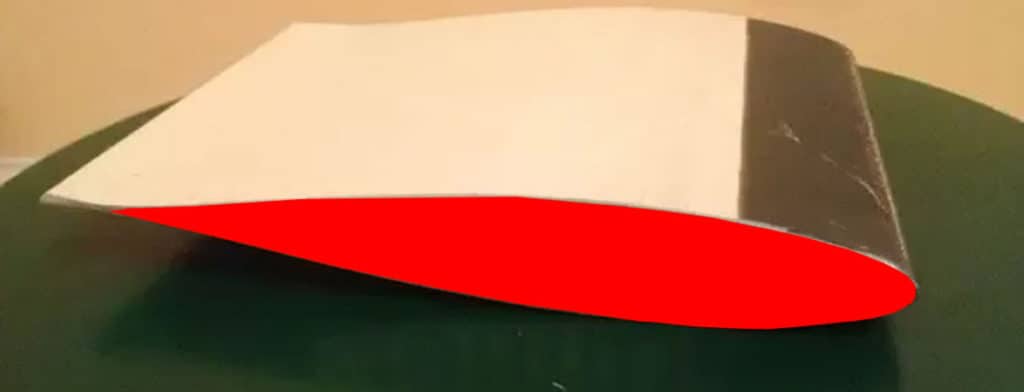
When a helicopter is in a hover in a no-wind situation the airflow is being dragged straight down from above by the main rotor blades as they rotate. This flow of air is called the Induced Airflow.
As the main rotor blade rotates and gets pushed through the air by the helicopter engine it rotates around its Rotational Path. The air coming in the opposite direction to the blade as it rotates is called the Rotational Relative Airflow.
When you join those two wind vectors together – As seen in the image below, you get the Resultant Relative Wind.
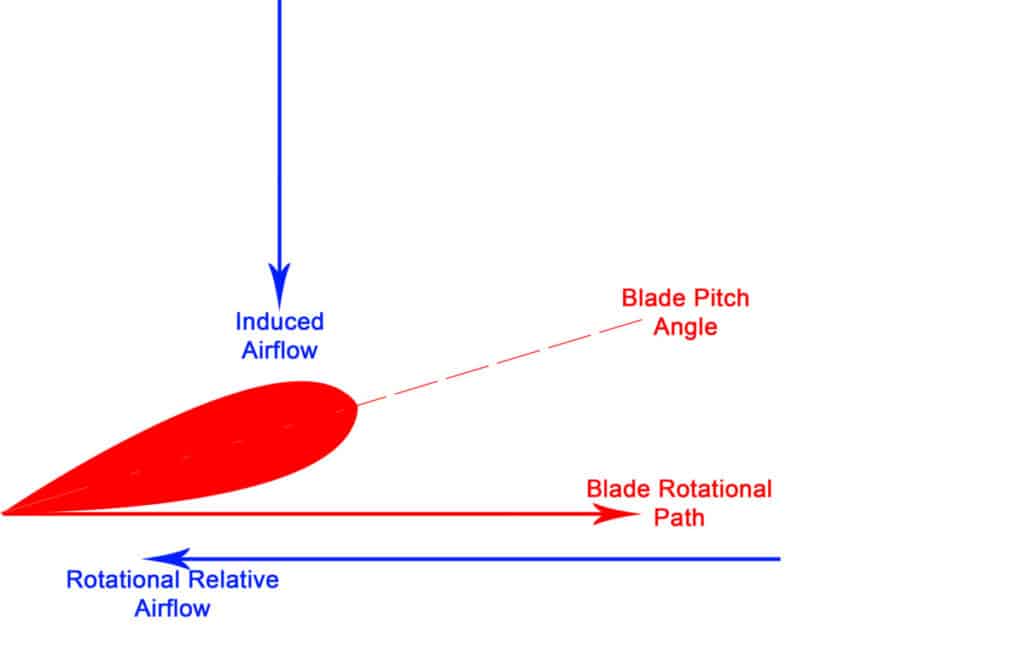
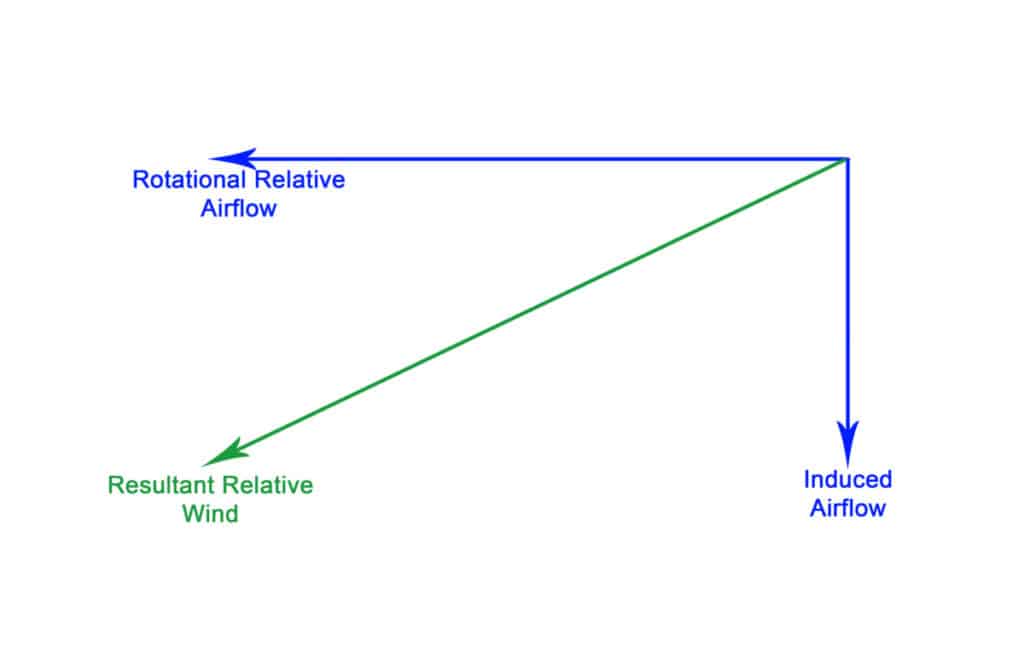
The Resultant Relative Wind now meets the main rotor blade. The main rotor blade is pitched upwards as the pilot has raised the Collective control to ask the helicopter to generate lift and lift it into the hover.

Join My Newsletter & Get Great Tips, Information and Experiences To Help You Become a Superb Pilot!
The difference between the Blade Pitch Angle and the Resultant Relative Wind is called the Angle of Attack. In simple terms, the Angle of Attack is what dictates how much lift is produced per the amount of power being inputted by the engine. I hope that makes sense.
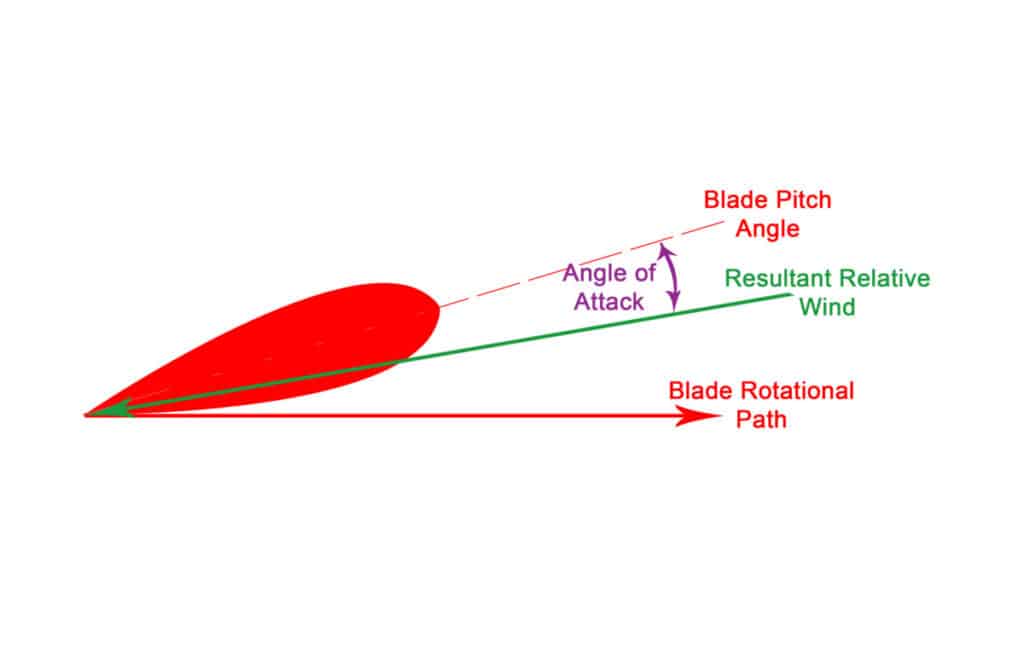
In a no-wind hover, there is a low angle of attack for a given pitch angle and engine power setting.
When wind begins to blow across the main rotor blades the Induced Airflow is no longer coming from straight above but now at a more horizontal angle. This will then create a Resultant Relative Wind Vector that is a shallower angle to the Blade Rotational Path.
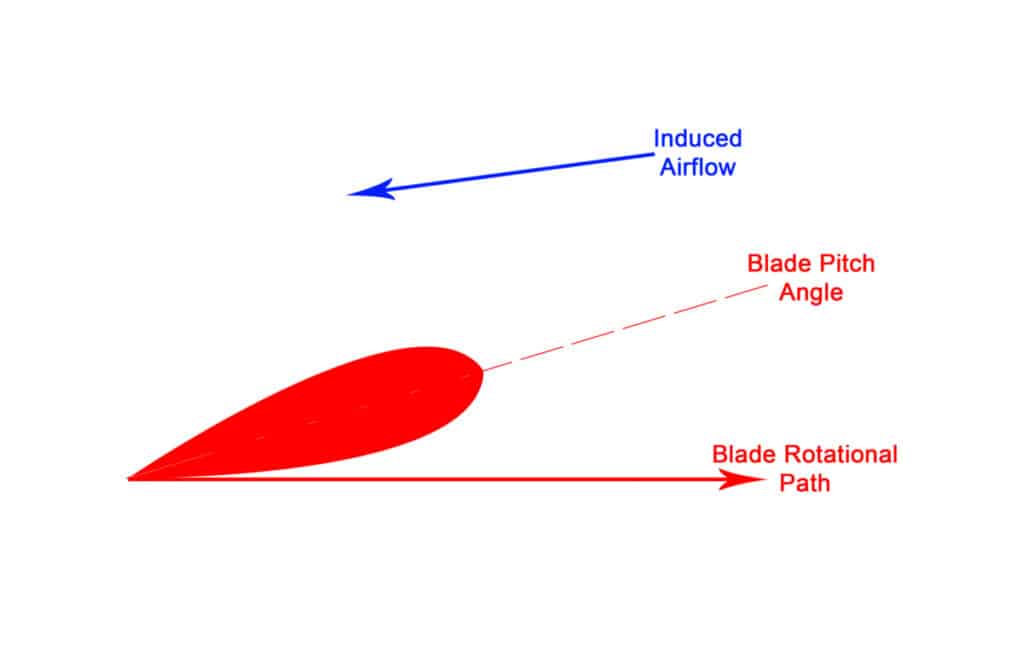
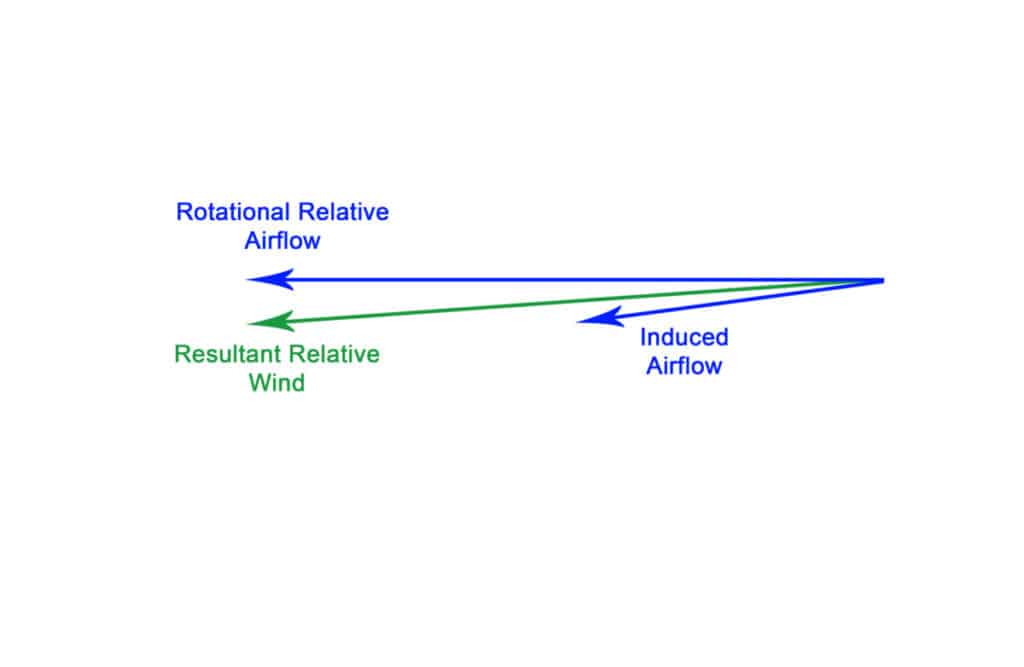
With a shallower angle, this creates more Angle of Attack for the same Blade Pitch Angle and the same engine power setting, therefore more lift is created just by wind moving across the main rotor blades.
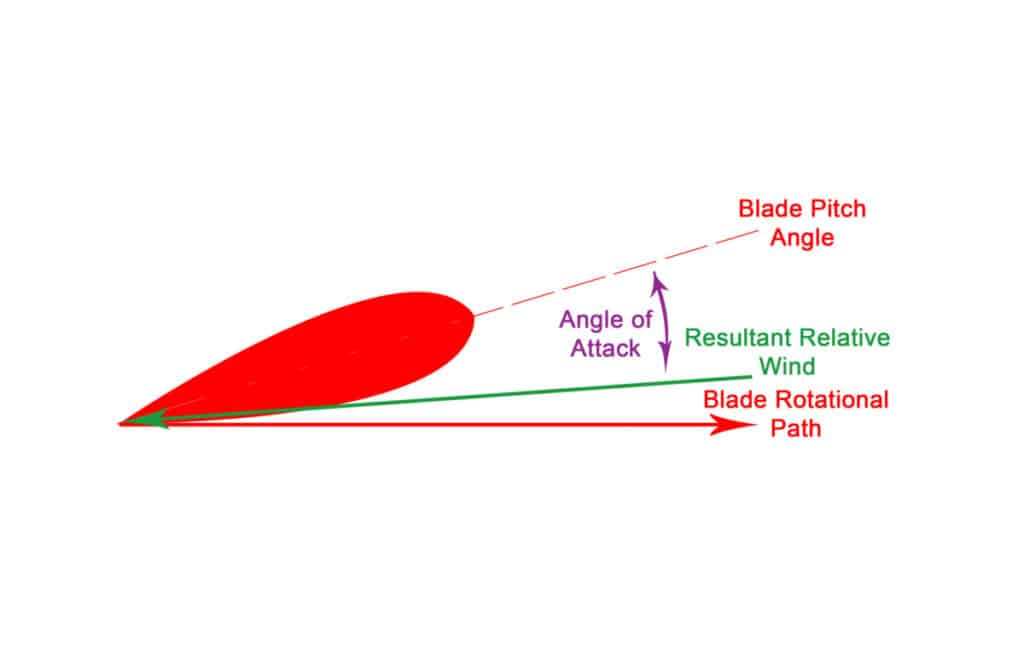
The wind can also be wind created as the helicopter begins to move forward and gain airspeed. This is how wind helps to improve the performance of a helicopter at as basic a level as I could get it. I hope you are following!
So, to sum up: let’s say the helicopter is in a stable hover at 70% Engine Power with no wind. Then a gust of wind blows and the helicopter begins to climb even though the pilot has not changed a thing. The wind helps to create more lift.
To remain at the same height in the hover the pilot has to reduce the Engine Power to 65%, thus the helicopter is now performing the same but at a lower power setting. This is how wind improves performance as the pilot now has an additional 5% in engine power available compared to a no-wind situation.
There are many other factors of aerodynamic performance but to keep this as simple as possible this is as deep as we need to go into aerodynamics!
Tail Rotor
The tail rotor is also called the Anti-Torque rotor. As the engine turns the main rotor, the fuselage wants to turn in the opposite direction. To prevent the fuselage from spinning round and round, the tail rotor produces thrust that is sent out sideways. When this Tail Rotor Trust equals the Torque of the fuselage the helicopter will fly without the pilot getting dizzy.
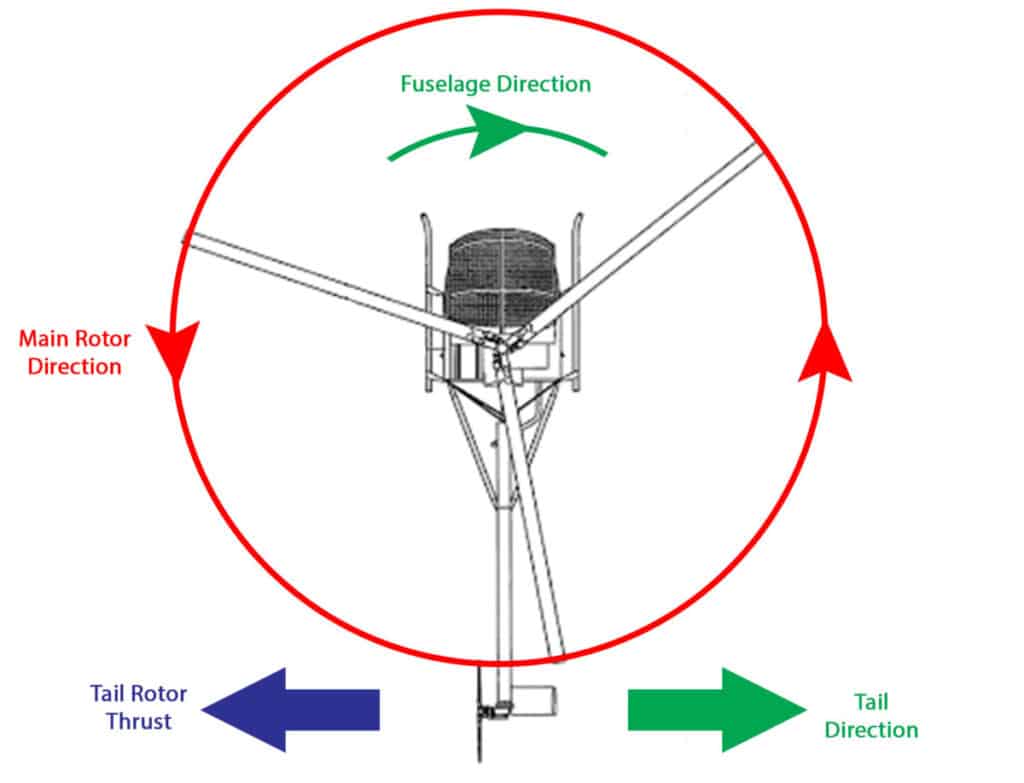
When a helicopter leaves the ground the thrust produced by the tail rotor always needs to be equal to the fuselage torque to keep the helicopter pointing straight. The only time the pilot wants the tail rotor to produce more or less thrust is to turn the helicopter using the pedals. Everything is controlled and the helicopter flies safely.
When the wind blows it can create an aerodynamic condition called LTE – Loss of Tail Rotor Effectiveness. There are three directions of wind that cause the tail rotor to not be as effective as it would be in a no-wind situation:
1. Main Rotor Interference
When the wind blows from roughly a 10 O’clock position it blows the vortices created by the tips of each main rotor blade towards the tail rotor.
Tail rotors work best when they have clean air around them. When each tail rotor blade receives turbulent, irregular airflow it reduces the thrust each blade produces. The reduction in thrust can cause the tail rotor to not balance the fuselage torque and the helicopter may begin to rotate.
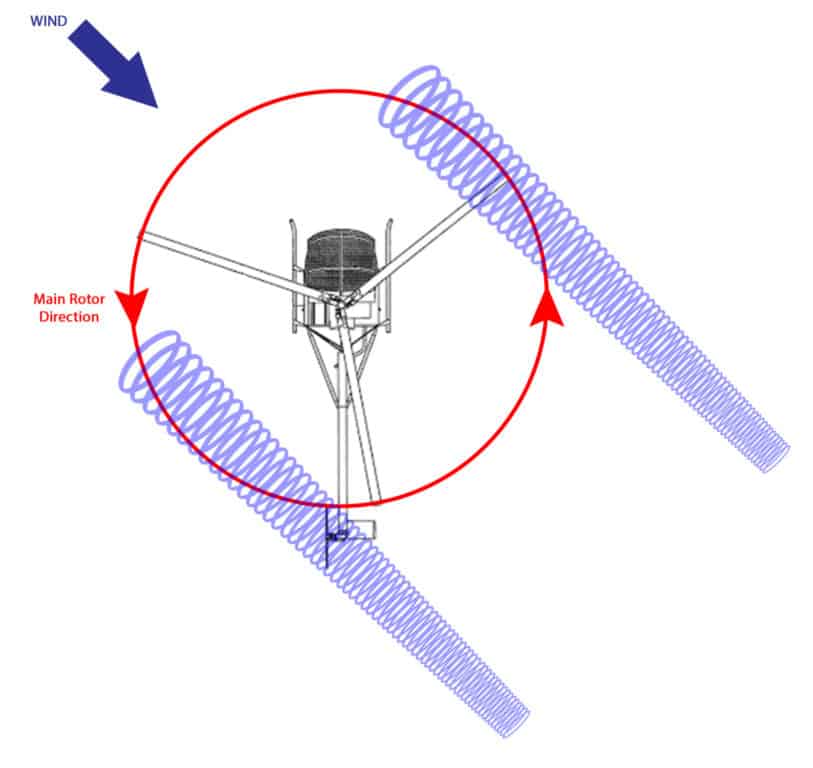
2. Tail Rotor Vortex Ring State
Tail rotors work by pulling in air from the right and forcing it out to the left. When the wind blows from the left-hand side of the helicopter this thrust the tail rotor is creating gets blown back into the tail rotor.
This reduces the thrust it creates and therefore alters the balance of thrust/fuselage torque and can allow the tail of the aircraft to begin to turn to the left uncommanded.
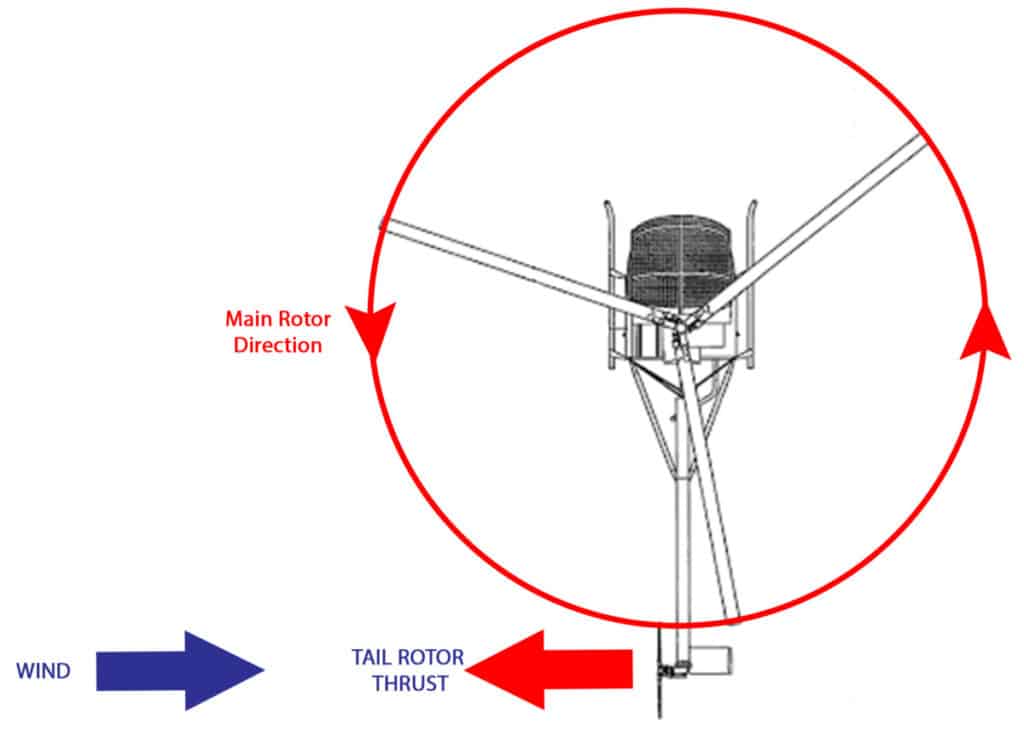
3. Weather Cocking Effect
At the rear of the helicopter is a huge vertical airfoil that is designed to have air flowing over it from the front of the helicopter. This helps to keep the helicopter pointing straight ahead in forward flight.
When the wind blows from behind the helicopter the vertical fin is trying to ‘Weather Cock’ and turn the machine into the wind where it performs best aerodynamically. This causes the helicopter to be ‘Twitchy’.

Learn More…
Try These Articles:
* Becoming a Helicopter Pilot: The Complete Cost Breakdown
* How Do Helicopters Create Lift? – A Helo Pilot Explains
Headwinds
Headwinds are when the wind is coming directly onto the nose of the helicopter. This is the preferred wind direction when taking off and landing a helicopter due to the increased performance it gives the main rotor as mentioned above.
Strong headwinds however can really hurt your distance traveled especially if you are in a helicopter with a very flat front like the Schweizer S300. The stronger the wind, the more it slows down your ground speed and the less distance you travel in a given amount of time.
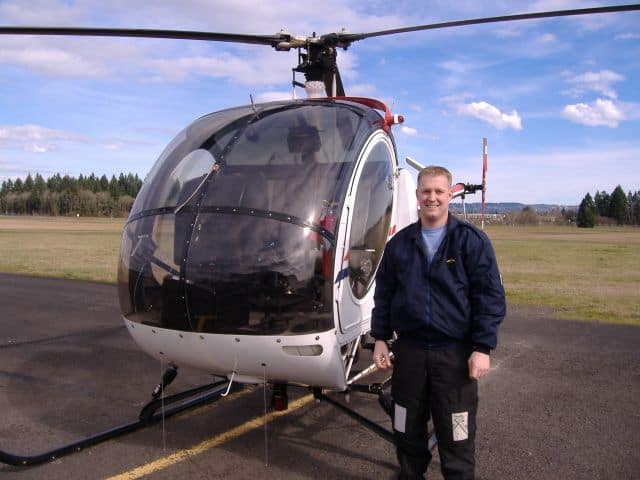
Crosswinds
Crosswinds are when the wind is coming from the left or the right in relation to the helicopter. Crosswinds are the second-best wind direction option for a pilot if the wind is not coming from straight ahead. Crosswinds from the left as mentioned above can give the tail rotor LTE if the pilot is not paying enough attention and being alert with their pedal control inputs.
Gusty crosswinds will try and push the helicopter sideways which can be annoying when trying to land the helicopter on an exact spot. Just watch a student helicopter pilot try and land on a windy day and you will see what I mean!
Boy, I hated it as a student as you could bet that people would be watching then too! There was never anyone around when you did a perfect touchdown!
Tailwinds
Tailwinds are very favorable when covering large distances as they can increase your ground speed dramatically. By looking at the Upperwinds Forecast a pilot can easily double the ground speed by flying higher into a strong tailwind condition. A good push from mother nature can really reduce the time you have to travel and I regularly look for tailwinds when flying a helicopter cross country.
Tailwinds can also cause a problem for a helicopter when coming in to land if the pilot does not recognize they have a tailwind. When the wind blows from behind, it can push the rotor wash created by the helicopter’s main rotor in front of the fuselage causing the helicopter to descend into its own turbulent air. This is very similar to the Tail Rotor Vortex Ring State, but this aerodynamic condition is called Main Rotor Vortex Ring State.
If allowed to develop, the helicopter can get into a very high rate of descent and if the pilot does not quickly recognize and remove the aircraft from that turbulent air the helicopter can easily crash with a high rate of descent.
Updrafts
Updrafts are created either by the ground heating the air and creating an upwards-moving column of air through convection or when terrain forces wind to flow upwards, ie: a mountain acting like a ski jump.
Updrafts can really make the passengers leave their stomachs behind and can be quite uncomfortable. When coming into land on a mountain peak using an updraft, it can become quite hazardous especially if that updraft ceases just at the wrong moment and the pilot has not planned an escape route.
Downdrafts
Downdrafts are mainly a result of thunderstorm activity or winds blowing over the peaks of mountains. Very strong downdrafts can cause a helicopter to descend at a high rate and the pilot may be unable to stop the descent. Because of this, it is always recommended to steer around strong thunderstorm cells by at least 25nm.
Downdrafts in the mountains can be strong on the lee side of a mountain. An unanticipated downdraft on approach to a mountain landing spot can be really dangerous if the pilot has not flown an approach that planned for a downdraft.
Windshear
Windshear is when the wind suddenly changes direction without warning. The worst type of wind shear is when the wind blows as a headwind and you are coming into land, but then the wind suddenly changes into a tailwind.
If the pilot has limited power due to being heavy, high in elevation, and/or humid conditions and is using the headwind for increased performance, that sudden loss of help from the wind can cause the helicopter to enter into a high rate of descent. If not corrected early enough by the pilot they may run out of available engine power to reduce the descent rate of the helicopter and have a hard landing.
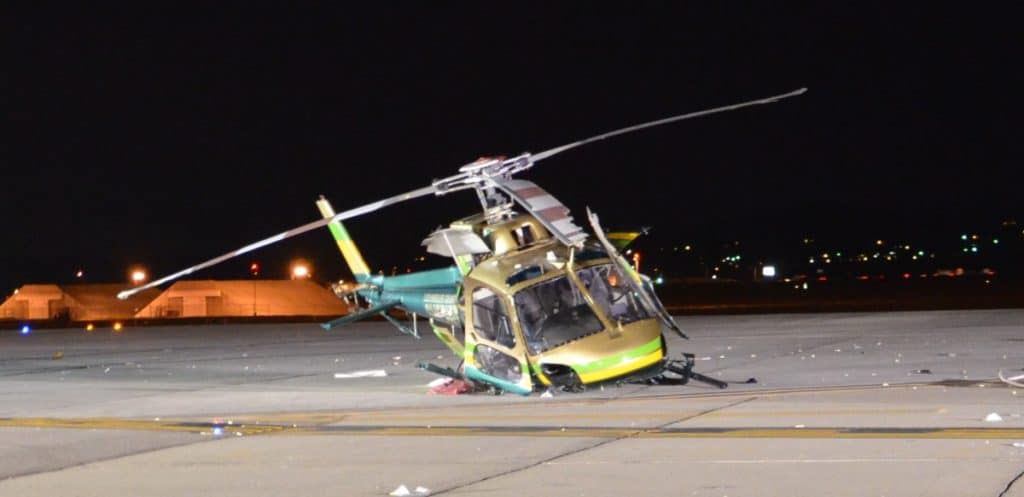
Learn More…
Try These Articles:
* Can Helicopters Auto Hover?
* Why Can’t Helicopters Land on Mount Everest – Yet?
What is the Maximum Wind for Helicopters to Operate in?
Most helicopters may have a maximum wind limitation or advisory listed in their Rotorcraft Flight Manual. High winds and gusty winds can cause problems when starting and stopping the main rotor system as the blades can flap up and down and make contact with the fuselage or tail boom causing damage.
When the helicopter first starts the rotors are flexible and droop down under their own weight. A strong wind can cause the blades to flap up and down when they are at a slow RPM causing them to contact the tail boom and do serious damage.
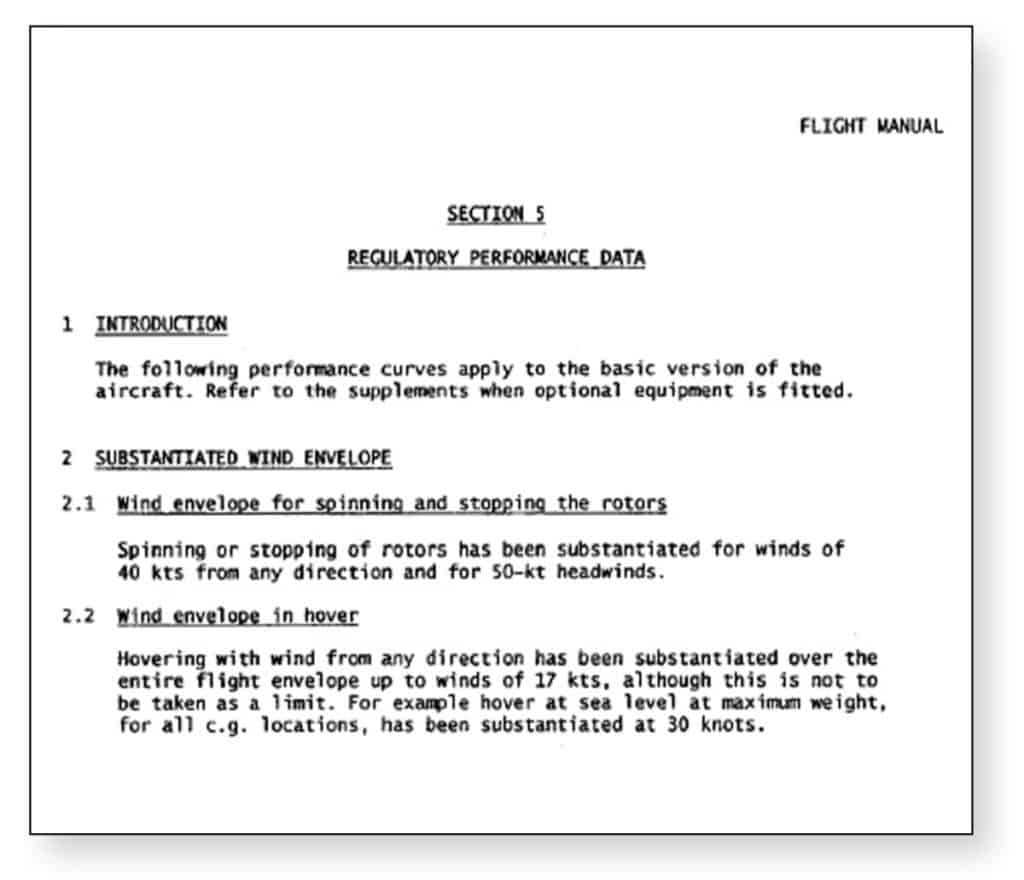
Once the main rotor is up to at least IDLE RPM, centrifugal force prevents the main rotors from large deflections created by wind gusts. Because of this, most manufacturers list a maximum wind speed for stopping and starting the helicopter.
During certification of the helicopter, test pilots will fly the helicopter in very high winds to test the controllability of the helicopter, especially the tail rotor. Just like the main rotor above, the RFM will also list the maximum wind conditions the test pilots found the aircraft tail control to respond to.
These wind speeds are not in the Limitations Section of the Rotorcraft Flight Manual so any pilot can fly in winds stronger than those listed, but it is at their discretion.
To Finish
The wind plays a huge role in the flight of any aircraft, especially a helicopter. The unique design of a helicopter allows it to accomplish incredible things but as a pilot, you also need to be aware of just how crucial the wind is to the safe operation of the flight.
Understanding and using the wind can really help, especially when flying the aircraft near its Maximum Gross Weight but misjudging the wind can really bite a pilot in the rear if not respected.

